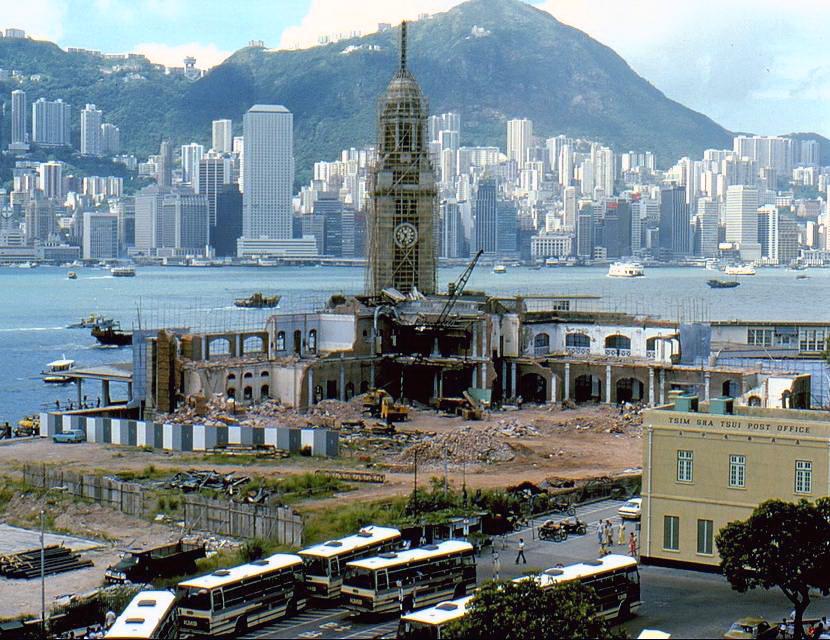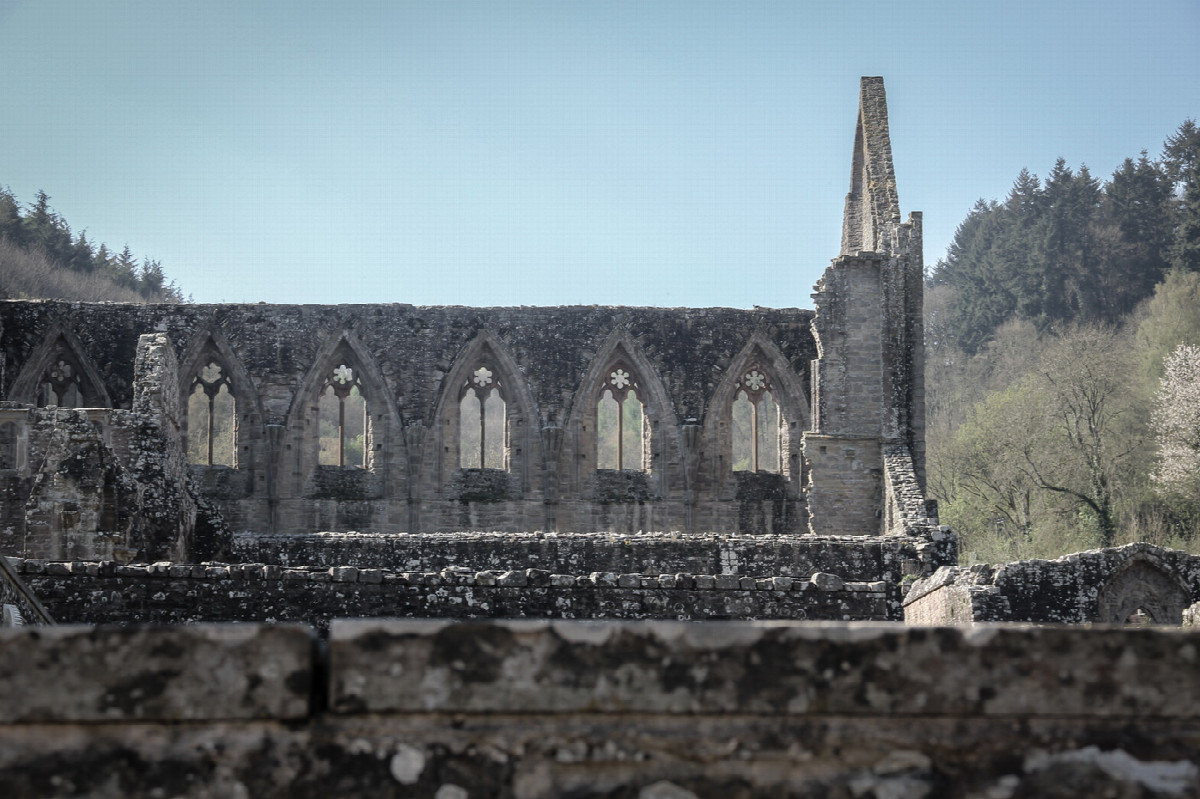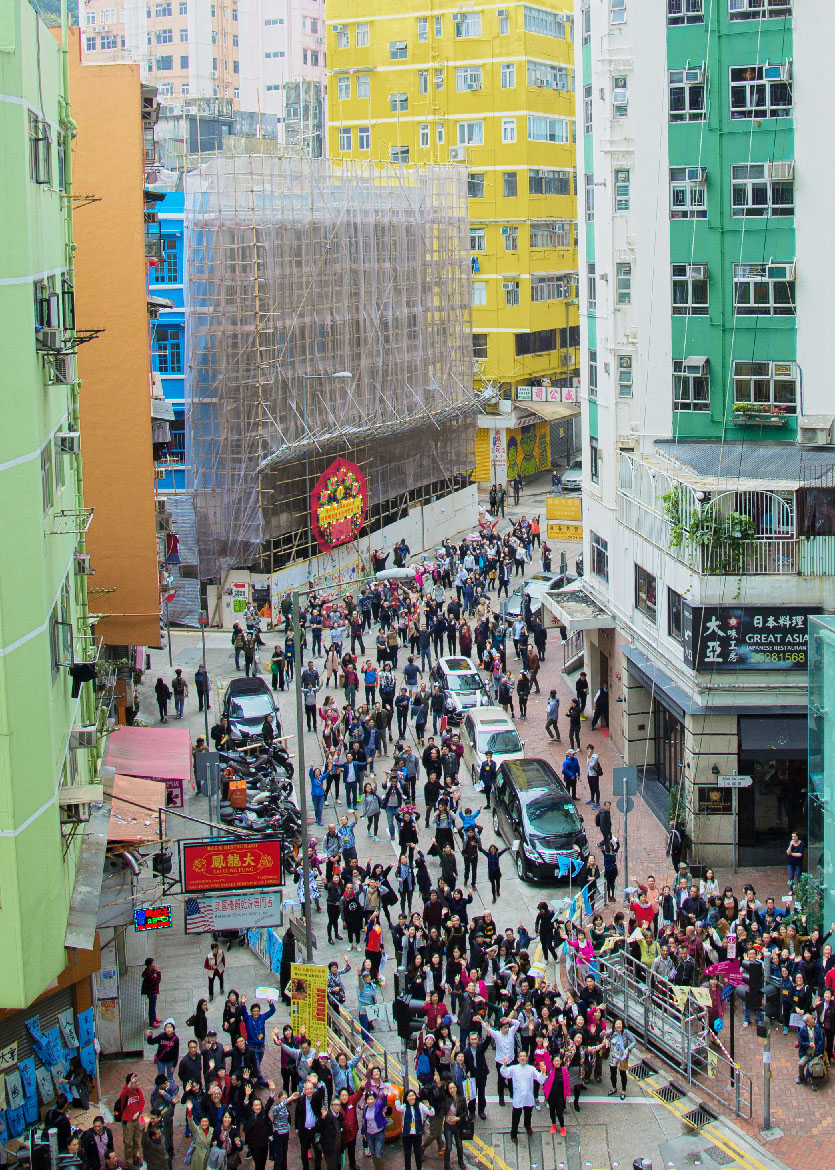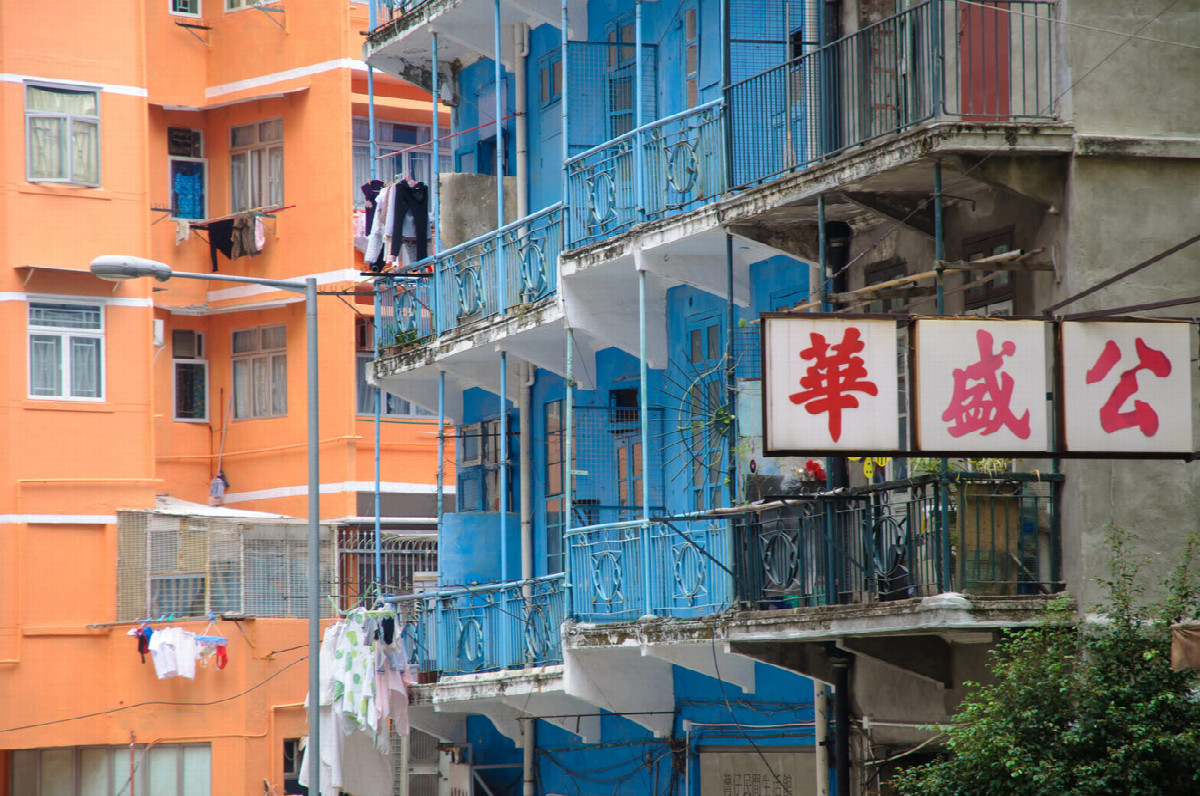In 1977, 15,000 citizens signed a petition to the Queen urging her to save the Tsim Sha Tsui Railway Terminus from demolition. It may have fallen on deaf ears, but the strength and passion of that grassroots campaign spawned a conservation movement that has since become deeply rooted and unwavering. Twenty years later in 2002, similar passions were aroused in the name of Lee Tung Street in Wan Chai – otherwise known as Wedding Card Street. It was earmarked by the Urban Renewal Authority for clearance and local residents and tenants protested vehemently. Despite extensive international press coverage, the community was ignored. The turning point came in 2007, when thousands took to the streets to fight government proposals to demolish Queen’s Pier in Central. Their campaign became a widespread social movement, inspiring Hong Kongers to resist any further destruction of the city’s collective past.

In a city that previously had scant regard for its architectural heritage, Oval Partnership’s founding director Christopher Law argues that Conservation is now one of our most powerful Architectural movements. Chris was addressing a BCI Equinox 2019 forum in March in the venerable surroundings of Haw Par Mansion on Hong Kong’s upper Tai Hang Road—one that escaped the wrecking ball.
Chris argues that Conservation has the potential to redefine what we traditionally regard as Architecture, what’s more he goes as far to say that it has the capacity to drive socio-political progress in contemporary society. This embedded social dimension we see in Heritage Conservation is powered by what was historically known as the Romantic Movement. However its social dimension has sometimes been forgotten by recent Conservation practitioners; particularly those focused on the historical or technical aspects of heritage.
All this is about to change. A spate of future generation projects are emerging that place social progress at their respective hearts. Work in this mould includes the Granby Four Streets project in Liverpool, Forensic Architecture’s investigative journalism work in many parts of the world, and the Blue House project in Hong Kong, all of which are redefining heritage practice by channelling its process back to its roots.
Raking through the complete annals of architectural practice, the conservation movement is, by virtue of its very nature, a relatively new phenomenon. In The Ten Books on Architecture by Roman architect Vitruvius, he presents the case that students of architecture should be acquainted with history in order to rationalise why they adopt one style of ornamentation over another. In his tome The Ten Books on Architecture, Renaissance architect Alberti emphasises the importance of examining all precedents prior to claiming knowledge in any particular subject. For ancient architects, the objective was all about learning from history, but the notion of conservation itself did not exist. Change began with the publication of Palladio’s The Four Books of Architecture. He regarded the ruins of ancient Rome as something to celebrate—in other words these structures did not need to exist merely as the means of instruction.

More recently, the 18th century English architect Sir John Soane, whose Neo-Classical architecture was inspired by antiquarian interest, encouraged those with means to embark on grand tours of Europe for inspiration. By the end of the 18th century, the Romantic poet William Wordsworth opined that old buildings provided comfort, not decay. He romanticises the “sensations sweet” when observing the ruins of his Tintern Abbey. Rather than seeing the decline and fall of past civilisations, Wordsworth discovered a longing for heritage landscape when confronted by the material progress of a fast changing world. He was one of the first to observe heritage buildings from a subjective rather than objective sense, and celebrated the subjective interpretation of buildings, elevating them to living entities whose forms capture a moment from past humanity. While nostalgia has always existed as a powerful component of heritage appreciation, Wordsworth taught us that the relationship between heritage and nostalgia is more complex and subtle than it superficially appears.
Victorian art critic, and arguably the father of the Conservation Movement, John Ruskin, was a radical visionary. In Unto This Last, he argued that in a just society, craftsmen, irrespective of economic contribution, should receive equal wages. Ruskin’s principle of universal income is now gaining currency in today’s progressive left policy agenda in Europe and the US.
He believed that the two most important objectives of architects are firstly to conserve historic buildings and secondly to make contemporary buildings historical. This was revolutionary, and a far cry from the “commodity, firmness and delight” definition of Architecture advanced by Vitruvius. Ruskin paved the way for architect Philip Webb and designer William Morris to establish the Society for the Protection of Ancient Buildings (SPAB) in 1877. SPAB was founded on the premise that the dimension of time should be discernible in buildings, only intervening to stop their further deterioration.
William Lethaby, Professor of Architecture at the Royal College of Arts and founding Professor of the Central School (now Central St Martins), and a protégé of Webb, declared that “Architecture were not mere design, form, or grandeurs, but ‘buildings’, honest and human, with hearts in them”. His study of Westminster Abbey was illuminated by the dimension of time—its 1,000 year history and the participations of its numerous craftsmen, artists and designers are expressed honestly through the building’s many layers of alterations. In other words, Conservation (rather than the design contribution of any single person) creates great Architecture including Westminster Abbey. Lethaby believed that craftsmen and architects should be of equal status.
Other proponents of the cause include Twentieth Century poet Sir John Betjeman, who was one of the first to campaign using modern media for saving architectural gems such as London’s St Pancras rail station. His poems, numerous radio broadcasts, books and TV films changed public perception and opinion about heritage buildings in the UK.
Established in 1895, the National Trust — with its motto “for ever, for everyone” — is now a powerful NGO boasting 5.1 million subscribed members in the UK and similar organisations exist in 56 other countries today. The National Trust looks after over 500 protected historic houses, castles, monuments, gardens, parks and reserves, with an average annual attendance of 20 million visitors.
Organisations like these have helped Conservation become the world’s most powerful Architectural movement in our history. No other Architectural movement is able to mobilise the support of millions of people and garner political and legislative support to anywhere near the same degree as Conservation.
In many respects, the rebirth of The Blue House in Hong Kong underlines the strength of impact a building can engender within the community. This low rise tenement cluster of buildings dating from the 1920s, was a conservation project that positively relied on locals participating in deciding its future use as well as how to operate it. It entailed a bottom up process with stakeholders actively participating in its re-imagining. A partnership was set up comprising: St James Settlement, the neighbourhood NGO whose history in the area dates back 60 years; Heritage Hong Kong, providing heritage conservation expertise; Contemporary Culture Concern, a grass-roots collective that creates art and cultural programmes; and community participation from the Blue House Resident Rights Group.
Chris Law has served as Chair of the project from its beginnings 10 years ago. Central to the building’s programme has been the desire to raise public understanding of heritage, and this is generated through The House of Stories and its roster of exhibitions, workshops, film screenings, tours and publications, alongside vegetarian and dessert restaurants providing local employment. Community interest is promoted through a Time Voucher Scheme, an initiative operated by St James Settlement that encourages neighbourhood support, as well as a goods and services exchange facility for those who are time rich and money poor.
The Blue House was honoured with the highest Award for Excellence in Asia by UNESCO Asia-Pacific Awards for Cultural Heritage Conservation 2017, in a tough competition alongside over 60 entries. “The Blue House project attempts to realise what John Ruskin and William Lethaby envisioned,” says Chris. “Its older residents have lived there and used the building for many years. Locals came up with their own meaning for the building. They became human agents, interacting with history and interfacing with historical objects. They rebuilt a sense of place in Wan Chai. While they are conserving heritage they are making history. The process was not easy … but it was extremely satisfying to develop what Architecture will mean to future generations—giving them a sense of identity and belonging through involvement in conservation and creation in a socially enlightened process.”






